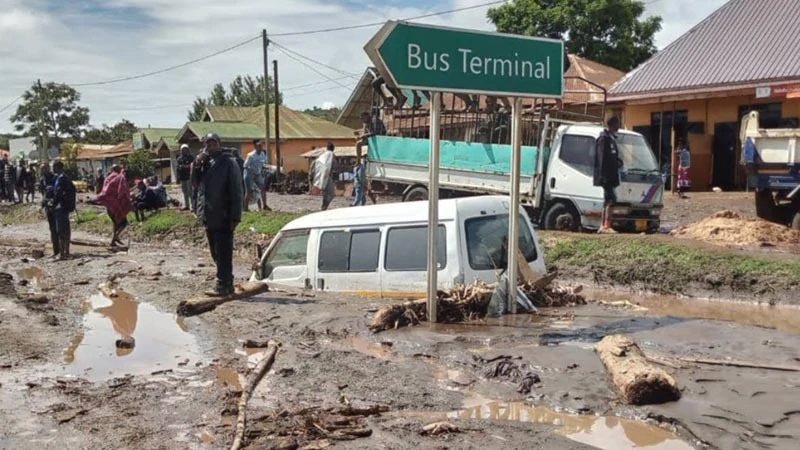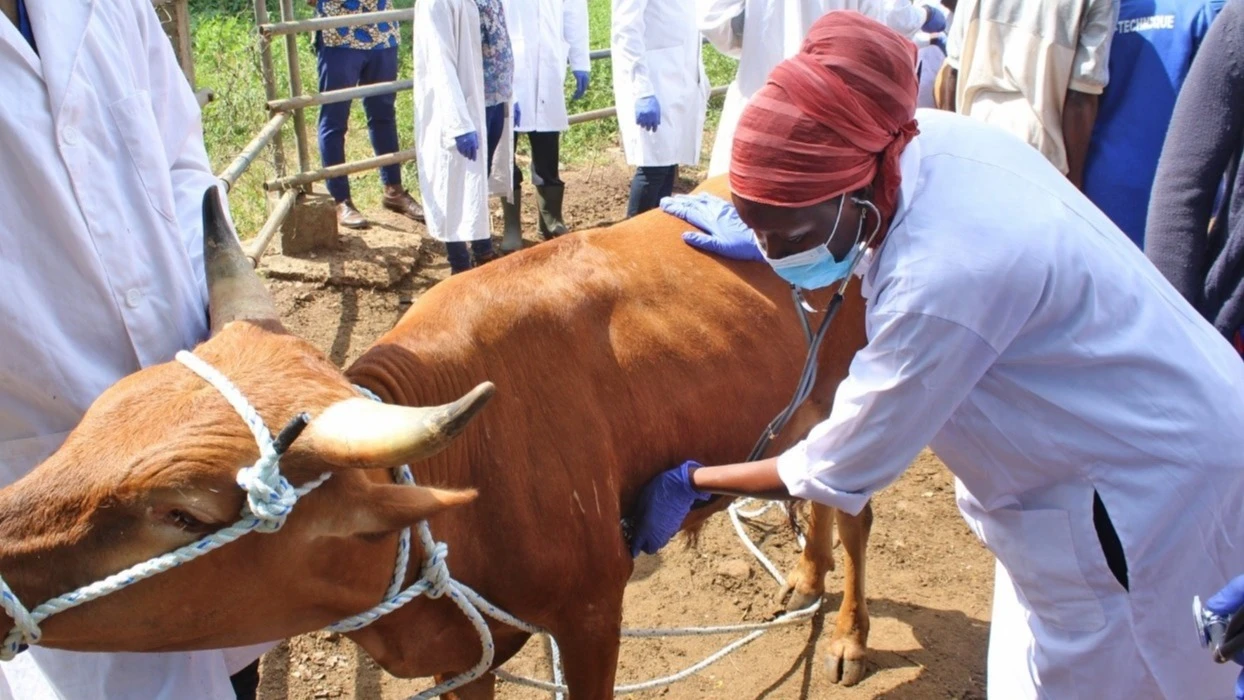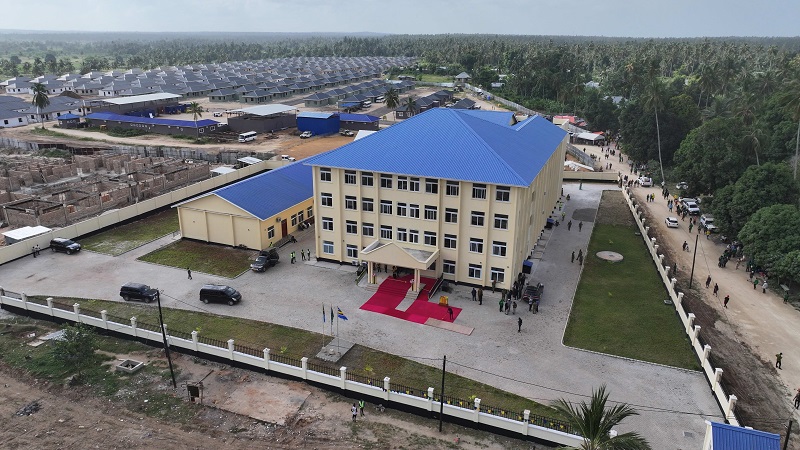CRUCIAL WAYS TO CONSERVE LAND TO AVOID LANDSLIDES IN TANZANIA

Mid-December 2024 intermingling Early-January 2025 were graceful instants for the world celebrating jubilant occasions regarding Christmas/new-year holidays. Nevertheless, Tanzanians continued the merriments while eagerly waiting for the spring rains; but also seriously contemplating vis-à-vis deaths and losses due to landslides befalling on mainland.
By Dr Felician B. Kilahama
It should be remembered, the landslide that happened in Katesh, Hanang district occurred in Disemba 2023 and same month 2024 another similar incidence happened in Same district, Kilimanjaro region.
Under normal circumstances, the landslides are the consequence of unsustainable land uses instigating forests/natural vegetation to disappear quickly thereby endangering human-life and other living-things.
Tanzania is endowed with natural forests/vegetation and tracking-back 64-years ago, the mainland was covered with natural-forests. Information issued 2015 by the Ministry of Natural Resources and Tourism; through the project to measure/evaluate forestry resources; indicated the area under forests/woodlands being 48.1 million hectares (55 percent mainland area). The “Miombo” forests/woodlands branded as most-widely spread type of natural-vegetation on villages’ lands. Nevertheless, the report revealed other forest-types covering mountains.
For instance, the Eastern Arc mountains chain also including the Kilimanjaro and Meru Mountains plus the Southern Highlands: Livingstone and Rungwe, alas forests in National Parks like Uduzungwa, Ngorongoro Conservation Area and tremendous forests/woodlands in Kagera, Katavi, Kigoma, Rukwa Regions.
Although the 48 million hectares indicated is acknowledged as remarkable national endowment this remain a parable taking into account that natural-forests/woodlands are rapidly declining. During past four decades, rates of deforestation have increased such that more than four-hundred thousand hectares (>400,000ha) are disappearing every-year.
This is associated, amongst other factors, with increasing population being less than 10 million (1961) to more than 60 million people (2022). As numbers of people escalate also needs for new-settlements, agriculture and livestock keeping increase.
Likewise, the villages (more than 12,000 in 2022 national records) but also towns and cities expanding rapidly while the urban-town planning services remaining behind.
Additionally, demand for forest products (timber, poles, logs or charcoal) increased to extent of stimulating the high-rate of deforestation.
Combining above factors together with other negative-impacts emanating from shifting-farming and uncontrolled livestock-grazing plus annually incidences of wild-fires and inadequate government capacity to protect/manage natural-forests/woodlands; negative impacts continued causing many parts on the mainland devoid of natural land-cover. Thus, net impressions consist of continued widespread soil erosion plus incidental landslides due-to land being devoid of natural-cover like grass/leaves, plants, trees and forests/woodlands.
Ecologically, natural-forests/woodlands and locally-endowed vegetation, to great extent, cover the ground/soil hence preventing soil erosion that could have occurred due to forces of winds/rain water.
The disasters occurring on mainland, for example, landslide in Hanang, Manyara Region in 2023; destroyed some neighbourhoods of Katesh like Gendabi. The landslide occurred due to heavy rainfall December 2-3, 2023; it was an unprecedented landslide from Hanang mountain causing unexpectedly overflow of rocks, logs downhill, and lots of water flowing from the mountain.
That extraordinary situation, created lots of confusion and/or uncertainty amongst the residents of Katesh plus neighbourhoods.
Additionally, the landslide destroyed more than 100 houses and killed some people. In that contexts, the government in collaboration with other stakeholders such as Church organizations; spent time and financial resources to assist affected citizens by constructing new homes and restoring critical social-services.
Again, December, 2024 in Same District, Kilimanjaro Region, landslides befallen due to inadequate natural forests/vegetation to covered/protect land while ensuring soils and other soil-nutrients remaining intact. Ecologically, forests/trees, grasses and/or other natural vegetation are practical pillars in preserving the land/soils based on their roots naturally oriented to hold/anchor and uphold soils in-situ.
Additionally, forests/trees reduce the speed/force of falling rainwater thus, enabling most of the rain-water to gradually percolate into the ground/soil without causing serious environmental damages. In areas faced with strong and unpredictable speed of winds, the forests/trees regulate the force/speed of such prevailing winds hence preventing loose-soil particles from being blown & transported to distant places.
There have been rampant practices involving farming on steep-slops without taking-care to prevent soil-erosion and/or landslides in environmentally sensitive areas. The disasters that happened in Katesh and Same in Manyara and Kilimanjaro Regions respectively, the main reasons hinged on land/soils in the mountainous areas being bare due to unsustainable farming and lifestyle systems in respective areas.
When the heavy rains appeared, lots of rain-water dropped on almost bare-ground and soils quickly loosened to the extent of causing exceptionally heavy landslides, including falling logs and stones from mountains seeping into residential areas and caused remarkable losses. For instance, the situation that happened in Same district left six (6) people dead and 25 houses demolished hence leaving some residents without homes. The information released by the media December 24, 2024 noted that most affected sites in Same district included: Bombo, Maore, Mtii, Msindo and Vuje Wards.
In 1963 there was a similar disaster in Shume-Manolo area in Lushoto district, Tanga Region after the then-Minister of Lands (first Cabinet of Ministers after independence); allowed the farmers to undertake farming on mountains’ slopes. The act of clearing forests to plant maize didn’t spare some residents. When heavy rains came, large landslides took-place including falling large rocks, stones and other hard-materials and destroyed residents’ homes. The permission to cultivate in mountainous areas was a political move however, professionally and ecologically it was not right decision. Nevertheless, this happened based on the government good intention to help citizens undertake farming but the results turned into unbearable outcry. Thereafter, the government instituted embargo thereby prohibiting farming activities on mountainous slopes.
It is crucial that leaders/authorities, government and those outside government, should realize that the forests/natural vegetation in mountainous areas are key to ensure stable environmental conditions at all times of the year. Hence, efforts should be made to preserve and conserve natural resources for the good of our nation. Conservation policies and strategies regarding climate change and/or national aspirations for environmental security, should be implemented including enhancement of legal instruments and practices.
If it is declared that in certain places humans shouldn’t enter to cultivate nor establish settlements, cut trees or animal grazing, let it be so and enforce accordingly. Also village authorities should establish by-laws to ensure mountainous areas and wetlands are specifically preserved and properly managed. Let’s not wait for disasters to happen then rush for actions: it is said “prevention is better than cure” hence the earlier we prevent disasters from happening the better. Those in power, at all levels, should not be ashamed of taking prompt/timely decisions/actions against the wrongdoers even if close-relatives or intimate-friends are the culprits.
The principle Law to maintain, protect and manage the environment on the Mainland, should place strong emphasis on sensitive areas and ensure not devastated by humans for disorganized personal interests. This must include forests/natural vegetation in vulnerable areas are not cleared/burnt whatsoever. The rules/regulations concerning forestry/bee resources be adhered accordingly including enduring good behaviour and patriotism. In-nutshell, for humans to live in comfort environment; efforts must be made to make forests/trees and natural vegetation in the wild are able to sing/cheer with joy, at the same-time, sustaining conducive environs for current and the generations ahead.
Dr Felician Kilahama is the environment expert based in Dar es Salaam. He can be reached through Email: [email protected]; Mobile Phone: +255756007400; +255714250050
Top Headlines
© 2025 IPPMEDIA.COM. ALL RIGHTS RESERVED

























